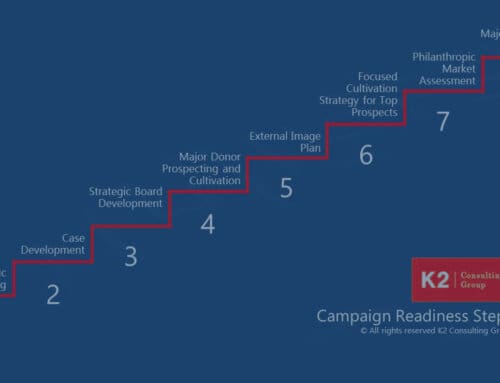The Jeffersonian Dinner is a perfect way for non-profit organizations to build constituencies of support.
Part I of II
Can you imagine an engaged group of dinner guests like the men and women pictured above discussing your non-profit’s cause? Over the years we have incorporated “Jeffersonian Dinners” into our development/advancement strategies with a goal of:
- building and rebuilding boards,
- recruiting civic leadership for major campaigns,
- cultivating steadfast donors and more….
My first foray into Jeffersonian Dinners some 16 years ago resulted in the rebuilding of a university board. Today, several of the guests from those dinners joined the board and have served in leadership positions including the role as Chair.
Here’s why you should make these part of your development program. A dinner like this is an effective way to:
- enlist new friends and advocates.
- identify and create interest among your prospects for joining the board.
- uncover new ideas for your non-profit.
- spread the word about your organization among new constituencies.
- further engage current donors.
What is a Jeffersonian Dinner?
Back in the 1800s, Thomas Jefferson turned the dinner party into a tradition at his Monticcelo home hosting an intimate group of people to form a discussion around a chosen topic. The only rule was that no more than 14 people attend, and the topic of conversation would be one that everyone would participate in. The end goal was to build community.
A Jeffersonian Dinner is not a fundraising event. There is no pitch for contributions. The purpose of the evening is to build a sense of community and partnership around a shared interest or theme relating to your organization’s mission.
Key tips when planning your Jeffersonian Dinner:
- Host the dinner in the home of a board member or other volunteer leader or donor to your organization – a setting where everyone in attendance can easily participate in a single conversation (like the illustration above). This means limiting invitations to the number you can accommodate around the same table. Unlike the typical dinner party, guests are not encouraged to engage in one-on-one dialogues with their partners on either side, rather everything should be directed to the entire group
- The hosts are also participants – Consider catering or preparing the food in advance and contracting a server to manage the entire dining experience and clean up.
- Who do you invite – If your goal is the recruitment of new trustees and donors, the invitees should generally include people with no past association to your organization and who are chosen because they are likely to be interested in your organization’s mission, have supported related causes, or have background knowledge on your chosen topic. It’s wonderful if your guests meet new people.
- Choose a thought provoking focus topic – Relate it to your non-profit’s mission. There’s nothing like an evening conversing with people on a stimulating topic. The robust conversation that can result from an evening of conversation that expands horizons and opens ones mind to new ideas and possibilities can benefit your organization.
- Don’t sell – This is not a pitch for your non-profit. The goal of the gathering is to make deeper connections and gain an understanding on topics relating to your cause.
- Crafting the right initial question is critical – The right question elicits personal stories from the participants. Avoid closed-ended questions that can be answered with a Yes or No. The purpose is to enhance the potential for personal connections among the guests, as well as a personal connection with the evening’s theme. (See Part II “Pop the Question”)
- Moderating a Jeffersonian Dinner – This is an art in itself so think about this well in advance of the dinner. Your organization’s CEO or ED should not be the moderator. S/he will likely be fielding questions as the expert on the topic. The moderator must gently guide participants along the pathway of the chosen topic.
See Part II for Jeffersonian Dinner themes and questions.
Ready to get started on reaching your potential? Contact us to get started.







